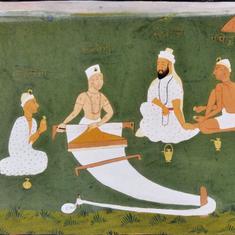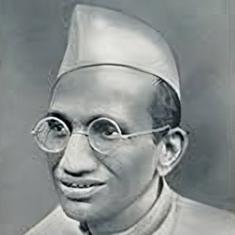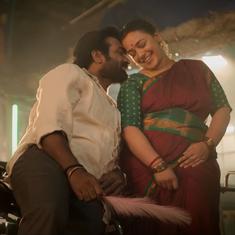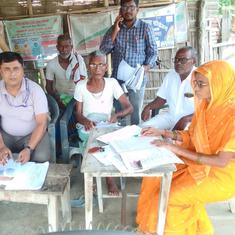Implicit in these analyses is a set of assumptions. One, it is projected that electoral consolidation is peculiar to Muslims alone. Two, this form of political behaviour is a political pathology which doesn’t afflict other social groups. Three, Muslims, unlike other communities, sink their class-caste divides and vote with a great unity of purpose. Four, rather foolishly and sinisterly, the political behaviour of Muslims is cited as the most crucial determinant between parties winning and losing an election.
Assumption no. 4 was proved wrong in last year’s general election result. Despite polling just 9%-10% of Muslim votes, the BJP swept large parts of north India, bagging 73 out of 80 seats in Uttar Pradesh. The National Democratic Alliance won 31 out of 40 seats in Bihar. There wasn’t a single Muslim MP who got elected on the BJP ticket.
This brings us to assumption no. 5 – that when Muslims unite to defeat the Bharatiya Janata Party, it triggers a proportionate response among Hindu voters, thus neutralising what is called the M, or Muslim, factor. This assumption was spelt out in a pithy sentence in a report – headlined BJP counts its strengths, but wary of alliance – in the Times of India on June 9.
The TOI report said, “Of course, the party can hope to benefit from the resentment against a Muslim consolidation in support of its rivals.” Parse the sentence and you can see the report assumes a cycle of inevitability. Thus, it is inevitable for Muslims to rally behind the JD(U)-RJD-Congress alliance; it is inevitable that the ensuing Muslim consolidation will spawn resentment, presumably, among Hindus; it is inevitable the BJP will take advantage of the Hindu consolidation.
Statistical disproof
Test the first four assumptions against statistical data to understand better the psychology underlying assumption no. 5.
Electoral consolidation isn’t peculiar to Muslims alone. The data from the National Election Study Series of the Centre for the Study of Developing Societies (all data for this piece has been taken from there) shows 38% of Muslims and 13% of upper castes voted the Congress in the 2014 Lok Sabha election. Against this, the BJP polled 47% of upper caste votes and just 9% of Muslims. This shows consolidation isn’t a peculiar Muslim behaviour.
It can very well be argued that the wave in favour of Prime Minister Narendra Modi turned the 2014 election into a unique one. This may be true, evident from a high percentage of votes the BJP polled among Other Backward Classes and Scheduled Castes last year, in comparison to what it had been till then.
Yet, despite the popular fervour for Modi, against whom the Muslims were said to be hostile, they didn’t demonstrate a greater degree of consolidation. In 2009, too, 38% of them had voted for the Congress, as they did in 2014.
Nor was this 38% of Muslim votes for the Congress spread uniformly. For instance, in Uttar Pradesh, only 11% of Muslims voted the Congress last year, down from 25% who had voted it in the 2009 Lok Sabha election. In 2009, Modi wasn’t the prime ministerial candidate, yet 53% of Brahmins and Rajputs and 57% Vaishyas had voted the BJP, despite knowing it wasn’t within striking distance of power.
This was as true of other caste groups. For instance, 73% of Yadavs voted the Samajwadi Party and a whopping 84% the Bahujan Samaj Party in 2009. Both parties lost a substantial slice of the votes of groups which constitute their mainstay, yet a majority of both communities voted as they always had.
Again, in Bihar, 65% of Yadavs voted for Lalu Yadav’s RJD in the 2009 Lok Sabha election and 64% in 2014; 65% of upper castes voted the NDA in 2009 and 78% in 2014. Or take the 2007 UP assembly election – 44% of Brahmins voted the BJP and 38% in 2012, the 6% decline quite insignificant considering it was well known the BJP wasn’t in the smelling distance of power.
Sociological phenomenon
The above data should make anyone doubt the veracity of assumption no. 1 – that electoral consolidation is peculiar to Muslims alone. Every social group tends to rally behind a party of its choice, based on its members determining what is materially advantageous to them or even the fact that the leader of their chosen party belongs to their community.
A voting pattern similar to all communities is considered a sociological, not pathological, phenomenon, which is assumption no 2. In case you insist it is pathological, then it indeed afflicts all social groups, as the data above clearly shows. However, this ‘pathology’ of Muslims differs from that of others on two counts.
One, they are inclined to shunning Muslim-based parties, apart from Assam and pockets of Kerala. Such parties Muslims don’t find favour because they know other Hindu social groups would keep away from them, rendering impossible the tasking of winning anywhere but for the 15 Lok Sabha constituencies in which Muslims are 45% and above.
It is true Muslims tend to vote for a party which seems best suited to defeat the BJP. But this choice isn’t based on an outpouring of atavistic passion, but anchored in rational calculations. Given the BJP’s propaganda against religious minorities every time it comes to power and its Hindutva philosophy, Muslims have to suffer from collective masochism to vote it. Did upper castes vote Lalu Yadav or VP Singh in the Lok Sabha election post-Mandal? No social group supports a political outfit which could diminish its life-chances.
Nor is assumption no. 3 true – that Muslims vote a party regardless of the caste-class cleavages among them. Data on the Muslim voting pattern is difficult to obtain. However, in a piece for the Economic and Political Weekly website, Hilal Ahmed shows 13.5% of upper class Muslims voted for the Congress in the 2009 Lok Sabha election, as against 42.5% of the poor.
Consolidation against consolidation?
A new set of figures emerges when caste is used for studying the Muslim voting pattern. The Congress polled 20.2% of Muslim OBCs, of whom 32.2% voted for the SP and around 20% for the BSP. By contrast, the SP and the BSP polled 28.4% of upper class Muslim votes. Among the poor, both regional parties got between 24-25% of votes, far lower than the 42.5% the Congress registered.
Obviously, assumption no. 4 is too ridiculous to cite figures to disprove, which has been anyway done in paragraph two of the story. Muslims are as crucial a factor in determining which party loses or wins as any social group. For instance, take away the Valmikis, Khatiks, and Passis from the BSP, and it is very likely that Mayawati’s electoral citadel will collapse, as it did, to an extent, in the last Lok Sabha election. Indeed, subtract one group from the traditional supporters of any party – and it has to augment its ranks by attracting another.
So why then assumption no. 5, which holds that a Muslim consolidation behind one party or alliance inevitably leads to resentment among Hindus and prompts them to rally together in response?
To answer this question, go back to the years before the 1991 general election. Till then, the Muslims voted along with upper castes and Dalits, mostly for the Congress. But the decision to implement the Mandal report threw the social groups in disarray.
The upper castes switched to the BJP, as much smitten by the Ram Temple movement as it was angry with the silence of the Congress on OBC reservation in Central government jobs. Aghast at the anti-reservation fury, the Dalits turned to the Janata Dal in Bihar. In Uttar Pradesh, they deserted the Congress for the BSP, embarking on an era of assertion.
Hindutva campaign
The upper caste hegemony in Uttar Pradesh and Bihar was consequently challenged, and undermined, as Muslims combined with either the Dalits or OBCs to defeat the BJP.
In response to this challenge, the BJP, now the repository of the faith and votes of upper castes, has resorted to Hindutva to wean away sections of OBCs and Dalits to create an electoral majority. Through its electoral tactics the BJP attempts to create an all-encompassing Hindu religious identity to subsume caste particularities. For this purpose, it has to portray Muslims as ‘the other’, ‘the enemy’ of Hindus.
This serves twin purposes. It prevents OBC and Dalit identities from crystallising and, simultaneously, prevents them from combining with Muslims to create an electoral majority.
There is no cycle of inevitability here – a Muslim consolidation doesn’t have to inspire Hindus to counter it, as it hadn’t happened before the 1991 Lok Sabha election. Then Muslims and upper castes would consolidate behind the Congress.
But what is inevitable is the BJP resorting to communal consolidation to win the Bihar election, now that the RJD-JD(U)-Congress electoral alliance has been forged. This will also be accompanied by stoking the pride of lower castes not under the umbrella of this alliance, or wary of it, and bring them into the Hindutva fold.
But journalists won’t factor this in their analyses. They won’t because most of them are upper caste, which is understandably determined to capture Bihar after having been in wilderness for 25 years. Sushilkumar Modi may be OBC, as is Narendra Modi, but the hand which will rock his political cradle will be that of upper castes. It will be interesting to see whether he’d be declared the BJP’s chief ministerial candidate.
Ajaz Ashraf is a journalist from Delhi. His novel, The Hour Before Dawn, published by HarperCollins, is available in bookstores.










